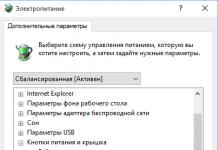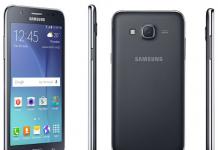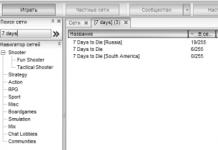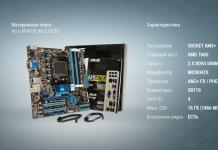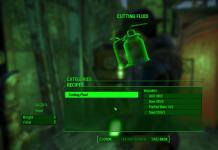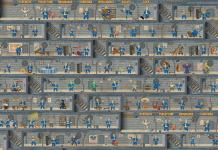A disk image is an ISO file that stores all the contents of the original media. There are other formats, but this is the most popular.
The computer recognizes the virtual image in the same way as a physical disk. Even if related files were stored on the original media, they will work correctly as an image. Therefore, most often they create disk images with installation files for games, programs and operating systems.
Modern operating systems read ISO files without additional programs. On older operating systems, you can use utilities like Daemon Tools for this. You can also open the image and view its contents using a regular archiver.
Why create disk images?
Let's say you bought a DVD/Blu-ray with a game or movie. Over time, scratches appear on it, which is why you can lose the recorded information. And the disk itself is easy to lose. In addition, it makes noise as it rotates in the drive, and the speed of reading data from it is lower than from computer memory. All these problems can be solved by creating a virtual disk image.
If the disk is copy protected, most likely it will not be possible to create an image of it.
Another example: you have a Windows distribution disk. It can be used for or OS, but a flash drive is much better suited for these purposes. Moreover, many modern computers do not have disk drives at all. But you can create a disk image and make a .
How to create a disk image in Windows
Ashampoo Burning Studio FREE is one of the most convenient utilities for creating disk images. Its interface has been translated into Russian, it takes up little space and is also free. During installation, the program requests a license key, but you can receive it by email after quickly registering an account.
Immediately after launching the utility, select “Disk Image” → “Create Image”. Then insert a physical disk into the drive and wait until the program recognizes it, then click “Next”. Then specify the folder in which the image will be created and select the ISO format. Click “Next” again and wait for the copying to complete.



The disk image will appear in the location you specified in your computer's memory.
If for some reason you are not satisfied with this utility, you can use similar free programs like BurnAware Free or CDBurnerXP.
On a Mac, this can be done in the standard Disk Utility, available in Finder → Programs → Utilities. After launching it, insert the desired disk into the drive and click “File” → “New image” → “Image from [name of your disk]” in the top menu.

In the next window, enter the short name of the future image in Latin. Specify the desktop as the destination and select the “DVD/CD Master” format. After that, click “Save” and wait until the copying is completed.
The created image will appear on the desktop and will have a CDR extension. If you plan to use it only on , then you can leave this format. But for Windows computers to read it, you need to convert the CDR file to ISO.
To change the image format, run the Terminal utility. Type cd desktop and press Enter. Then enter the second command hdiutil makehybrid -iso -joliet -o [name 1].iso [name 2].cdr, after replacing [name 1] and [name 2] with the names of the future ISO file and the already created CDR file, respectively. Then press Enter again - after a while the ISO image will appear on the desktop.
Let's say we first created a CDR file called olddisk. Then we choose, for example, the name newdisk for the future ISO image. As a result, the commands for our case will look like this:

Most users are faced with the problem of creating a boot disk for Apple computers when reinstalling the system.
These instructions will help you create a boot disk and rebuild your system from scratch.
Before you begin reinstalling the system, make sure that you have everything you need:
- Flash drive with at least 8 GB. The flash drive should not contain important files, since during preparation we will have to format it. Or DVD DL (Dual Layer DVD)
- iLife 11
If you bought Mac OS X Lion or Mac OS Mountain Lion and you don’t have an image, don’t worry, you need to right-click on the operating system installer, which is located in the program folder, and click “Show package contents”

The contents of the installer will open in a new window. Go to Contents->SharedSupport folder and copy InstallESD.dmg to your desktop. This is your boot image.

Everything necessary has been sorted out. Now you need to carry out simple manipulations to prepare an installation flash drive or burn the installation image to a DVD DL disk.
Creating a bootable Mac OS USB flash drive.

1) Open the Disk Utility program, which is located on the path Finder->Programs->Utilities

2) In the top menu, click File -> Open disk image, and select your installation system image

3) Insert the flash drive and make sure it shows up in Disk Utility
4) Click on it and go to the "Disk Partition" menu

5) In the “Partition Scheme” drop-down menu, select “Partition: 1”

6) Just below is the “Options” button, click on it and check the box next to “GUID Partition Scheme”

7) And in the “Format” section, select the disk format “Mac OS Extended (Journaled)” as shown in the picture below, and enter it to your liking

10) Click on the “Apply” button for the changes to take effect. Let us remind you: all data from the flash drive will be deleted

Now all we have to do is clone the image onto a flash drive. For this:
11) Go to the “Restore” tab and drag the USB flash drive to the “Destination” item, and the image to the “Source” item

12) Click the "Restore" button

13) Disk Utility will warn you that it will delete all data from the flash drive, we agree by clicking on the “Erase” button

Copying takes up to 20 minutes. After which you can begin installing the operating system.
Creating a Mac OS boot disk.
In addition to a bootable USB flash drive, you can create a boot disk with the system. In some cases, this option is simpler, for example, if you don’t have a flash drive at hand or you often reinstall the system.
As written above for the boot disk you will need:
- installation system 10.7 or older
- DVD DL disc (double layer DVD disc)
- We strongly recommend that you have an installation disk with iLife 11 since the programs iPhoto, iMovie, iDVD, GarageBand are not installed with the system, but come as a separate package.
1) Open the Disk Utility program, which is located on the path Finder->Programs->Utilities
2) From the top menu, click the “Burn” button and select your installation system image

3) After a short preparation and checking of the disc, the “Burn” button will light up, which you need to press to start recording to the disc.

Installing Mac OS from scratch
Now it's time to move on to installing the Mac OS operating system.
1) Turn off your computer.
2) Turn on the computer and hold down the Alt button until a selection of boot volumes appears.

3) To boot from the installation flash drive, double-click on it and wait for it to fully load.
4) 2-3 minutes after selecting the boot volume, you will be prompted to choose a language - choose a convenient one, for example Russian.

5) After a few seconds, you will see a window with utilities that will help you reinstall the operating system.

6) Run Disk Utility and format the disk, to do this follow steps 4-10 of this instruction, but not for the flash drive, but for the internal disk. Then close the program. As always, I have to warn you that all your files, data, programs, etc. will be deleted. If you want to save your data, use the instructions Setting up a backup copy on Mac OS
7) Now you will need the utility located just above - “Reinstall OS X”. This is the last program that we need to use on our way to a reinstalled system. Launch it and follow the instructions that will be displayed on the screen.
If you have any difficulties or questions, they will make every effort to help you.
DAEMON Tools for Mac is our first image mounting solution dedicated to Mac OS fans. It allows, organizing virtual discs in the convenient collections and. Today I"d like to tell you about the absolutely fascinating feature which has been added to DAEMON Tools for Mac with the latest released version - the ability to.
I"ve already tested DAEMON Tools for Mac 3 and would recommend you to download the trial version and check it too. The new version offers brilliant Yosemite-styled design, improved iSCSI Initiator feature and the ability to create ISO image from files that I"d like to tell you more about. So, click the download button below, it is completely free of charge!
Why do I need to create ISO image on Mac?
People who have never tried to create ISO image on Mac may wonder why this feature is so essential. Let's discuss the most popular cases. First of all, it is cool to create image from folder to archive some data. DAEMON Tools for Mac allows you not only to create a perfect backup of the important files but also compress them in order to save the hard disk space.
The next case which requires you to create ISO image from files is related to important private information. An encrypted image is the easiest and the most effective way to protect valuable data with password. Later you will be able not only to use this image on Mac but copy to USB-stick and don"t worry if someone gets unauthorized access to it.
And of course, after you create ISO image from files, you will have plenty of ways to use it. I"ve already mentioned about secured images copied to USB-stick, and that is not all. Image is a virtual disc, and you still can turn it into physical one or share over the network. Just use DAEMON Tools for Mac to create disk image, Mac OS" standard Disk Utility to burn it or DAEMON Tools iSCSI Target to .
Why do I want to know? My case is rather complex. I have lots of work files on my computer, and I"d like to create the backup of them. Of course, the files need to be secured and should not occupy too much space on the hard disk drive. I have a bit old- fashioned MacBook, which includes writable drive, so I will burn my custom image on DVD-R Let's try to. create image file from folder together with me and see how DAEMON Tools for Mac can cope with this task.
How to create an ISO image on Mac?
Finally, we came to the main question of this post — how to create an ISO image on Mac using DAEMON Tools. Let's do it together.
I"ve downloaded and installed DAEMON Tools for Mac 3 and opened its main window. Then:

It is great to know how to create an ISO image on Mac, and there are plenty of ways to use it. I hope you will try this useful feature and write me in the comments about your impressions.
As you know, data security today is not an empty phrase. Information security is one of the important areas of the computer era. Sometimes a complex password is not enough to ensure reliable system protection. Therefore, today we will look at a simple way to create protected disk image on Mac OS X.

« Crypto disk» allows you to save important information in one container. You can put files of any type here, be it videos, text documents or photos. The method is very simple and reliable, it is performed using standard Disk Utility in Mac OS X. By the way, for Windows there is a similar program called TrueCrypt.
So let's get started:
1) Go to the Programs menu -> Utilities -> Disk Utility.
2) B Disk Utility Select the option to create a new image (New Image).
3) Come up with a name for the new Image and choose the size.
4) Select the data recording format (Mac OS Extended for use only on Mac or MS-DOS (FAT) to support Windows computers too).
5) Further in paragraph Encryption select the encryption algorithm (AES 128-bit (fast) or AES 256-bit (more reliable, but slower))
6) In other points we leave the default options.
7) Click on the “Create” button - the program will ask you to enter a password for the new image.
8) After you set a password, an encrypted image will be created.
9) Here, encrypted container and ready to use.

Of course, many of the advanced Mac growers have known about this feature for a long time, but still, for most, the material should be useful.
The procedure is discussed in more detail in the video from the CultOfMac project:


